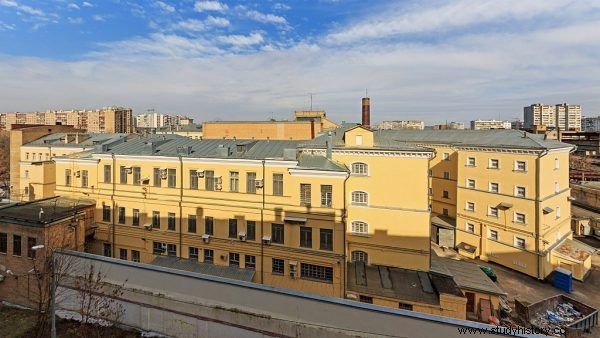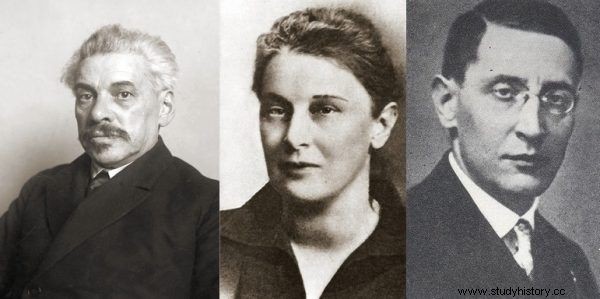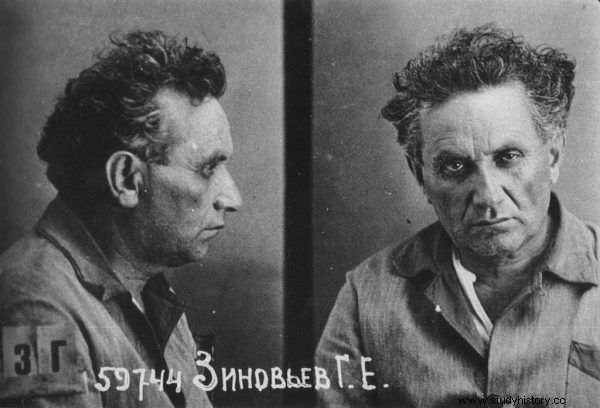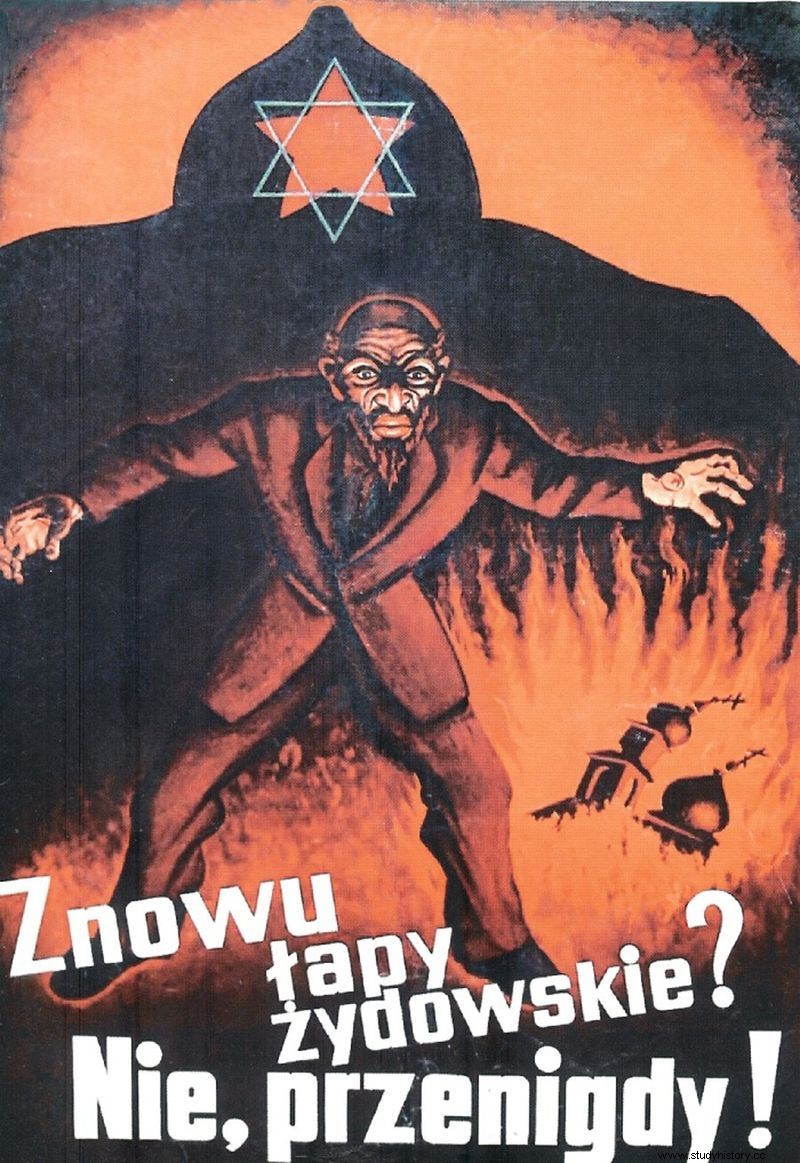Deliberate liberals, Trotskyists, intelligence agents and Jews - this is how Joseph Stalin perceived Polish communists. He hated the Communist Party of Poland from the very beginning. Once he became powerful, he led to its dissolution, and prepared a real blood bath for his Polish comrades.
As morning was approaching, the prisoner heard footsteps pounding in the corridor. Moments later the cell door creaked open and the guard called him by name. With the rest of his strength he dragged himself out of the bunk and slowly shuffled towards the exit. After several months of tortured investigation, he was barely on his feet. Besides, he was in no hurry. He knew where he was going.
A few hours earlier, at an overnight session, the Military College of the Supreme Court of the USSR sentenced him to death for "participating in a spy-subversive organization" for bourgeois-fascist Poland. Two dark-faced NKVD men were already waiting outside. They took him by the arm and led him through the empty corridors of Lefortov, one of Moscow's most famous prisons.
They descended lower and lower until finally they reached one of the prison cellars. There the executioners set the condemned man under the bullet-riddled wall, one read him a short sentence, and the other shot him in the neck with a service rebuke. On August 21, 1937, Tomasz Dąbal, a legionnaire, Member of the Polish Parliament, a communist activist, one of several thousand Polish communists murdered in the USSR as part of the Stalinist purges, died.
Trotskyism into enemies
From the 1930s, the cult of Joseph Stalin grew stronger in the Soviet Union, and after eliminating all real and imaginary competitors to power, he became an omnipotent dictator. However, the Georgian was not satisfied by gaining a dominant position in the party and the state. Maniacally jealous of power, he continued to remove people from his close and distant surroundings. Now no longer competitors, but all those who had their own opinion and thought for themselves.
Even a slight disagreement with a dictator could have made someone imprisoned or killed. Stalin propagated his theory of the aggravation of the class struggle as he approached socialism and, using it, proceeded to purge the state. The greatest threat was Trotskyism, that is, professing the views of Lev Trotsky and his associates, expelled from the USSR (and then murdered). A not very clearly defined political concept became a convenient whip on all those Stalin wanted to get rid of .

Lefortowo, next to Butyrek, is one of the most famous prisons in Moscow, named after the district named after Franz Lefort - the Russian admiral and favorite of Peter the Great. During the times of the USSR, this is where most of the victims of Stalinist terror, including Poles, were held.
May bug of Polish comrades
Polish communists were also among the circles that had the misfortune to attack the commander. For many years, the accusation of "Trotskyist character" was dragged behind the Communist Party of Poland. As the Russian historian Nikolai Ivanov writes in his latest book "Communism in Polish":
The so-called May error, when the leadership of the CPP cautiously backed Marshal Józef Piłsudski's return to power as a result of the 1926 coup. The leadership of the KPP also called for a general strike to overthrow the Chjeno-Piast government. Moreover, according to Stalin, the CPP made an even greater mistake, addressing the Polish workers with an appeal calling for them to take the side of Piłsudski's troops against the government forces. The "May Error" provoked a very harsh reaction from the Communist International and from Stalin. The position of the CPP leadership was considered treacherous and it was decided to change the entire majority leadership of the party.
A special envoy of the Comintern was then sent to the CPP, who led to the transfer of power in the party to a group of the so-called minority members led by Julian Leszczyński-Leński.

At the 5th Congress of the Comintern in 1924, a special commission was established to settle the dispute between "minorities" and "majorities". As a result, Adolf Warszawski-Warski (in the photo on the left) and Maria Koszutska (in the center) were dismissed from the authorities, forbidding them to return to Poland. Julian Leński-Leszczyński (on the right) started to play a dominant role in the new government.
Stalin settles the conflict
The second major disadvantage of the CPP was, according to Nikolai Ivanov, its relatively liberal internal life, distinguishing it from other groups belonging to the Communist International. The KPP tolerated views that were unthinkable among Soviet comrades. There were heated discussions, disputes and conflicts there. Views and currents clashed. There was no uniform position on the tactics of the revolutionary struggle and methods of combating the capitalist system in the Second Polish Republic, as well as on many other important issues.
There was no unanimity even on such an important issue as Poland's independence. Against the background of these disputes and discussions in the 1920s, the party split into two groups:minority and majority. In 1924, Stalin became the head of the Comintern committee that was to settle the conflict between the two groups. He then accused the current leadership of the party of taking a hostile stance towards the Soviet government. He personally edited a letter from the Communist International to the main units of the Polish company, in which he demanded that the then leadership be removed from power. And so it happened.

In a dispute within the Social Democratic Workers' Party of Russia, Rosa Luxemburg supported the Menshevik side against Vladimir Lenin's Bolsheviks. After the Russian revolution, she warned against dictatorship. No wonder that even for Stalin she was the epitome of treason and an enemy of communism. The photo shows the Luxembourg monument in Berlin, above the Landwehrkanal.
Right-wing deviation of KPP
Stalin's dislike of the Polish communists turned out to be a constant feeling. He openly expressed it in the article On some issues in the history of Bolshevism in which he recognized the CPP as "the ideological child of Rosa Luxemburg" and a symbol of opportunism. And luxembourgism, in the Polish communist edition, is after all nothing more than the "early spring of Trotskyism" .
Stalin also feared that when removed from the Communist Party of the Soviet Union (Communist Party of the Soviet Union) and the country, the Trotskyists might want to take control of the Comintern. And the most vulnerable to their infiltration is, of course, the Communist Party of Poland. In his latest book, Communism in Polish, Nikolai Ivanov writes:
In his public speeches he repeatedly warned against the threat of transforming the CPP into the main bastion of the "right opposition" in the ranks of the Communist International. In a speech at the United Plenum of the Central Committee and the Party Control Committee of the CPSU (b) on August 1, 1927, Stalin emphasized with great force the relationship between one of Lenin's closest associates, Grigory Zinoviev - who until 1926 headed the Communist International and was in opposition to Stalin - and KPP, accusing the former that it was he who made Poles commit the aforementioned "May error".

Grigory Zinoviev was a Russian communist of Jewish origin and a leading activist in the Bolshevik movement. Stalin quickly recognized him as a threat. On trial in the first Moscow show trial on the brink of great terror in the USSR, he was executed in 1936. The photo shows Zinoviev after his arrest by the NKVD.
Too many Jews
Another reason for the leader's dislike of the Polish communists was the ethnic composition of the KPP, and especially of the leadership of the majority. It was very similar to the structure of the opposition in the VKP itself (b). This is probably why, writes Nikolai Ivanov, the CPP was treated in the same cruel way.
Almost all of Stalin's leading opponents in the party (Lev Trotsky, Grigory Zinoviev, Lev Kamenev, and Charles Radek) were Jews. In turn, in the KPP, the percentage of Jews in the government was higher than among the rest of the members. According to the Polish historian, prof. Paweł Śpiewak, 53 percent of the so-called central act of the KPP in 1936, and 75 percent of the publishing apparatus. The following year, eight Jews and seven Poles were members of the changed KC KPP, composed of 15 people. The same distribution was observed among the 15 secretaries of the party district committees.
Eliminate Agents!
The great purge carried out by Stalin in the second half of the 1930s, especially the so-called Polish NKVD operation carried out in 1937-1938. As part of it, over 100,000 Poles were exterminated in the USSR .
In the spring of 1937, during the trials taking place in Moscow, prosecutor Andrey Wyszyński stated in one of the accusatory speeches that the activists suspected of Trotskyism had been in contact with the 2nd Division of the General Staff of the Polish Army and were conducting intelligence activities for the Sanacja Poland. In this way, Trotskyism was connected with Poland and Polish intelligence. The Executive Committee of the Communist International quickly concluded that the Polish Section of the MK was overrun by "Trotskyist-Sanation agents." So it was decided to liquidate the spies and dissolve the party.

Was Stalin an anti-Semite? This question arises itself, since one of the arguments for the purging of Polish communists was the Jewish origin of most of the KPP members. The illustration shows a propaganda poster in Polish from the 1920s.
Bloody purge in Moscow
The arrests began. In May, the NKVD detained a group of founders and leading KPP leaders in Moscow, including:Stanisław Bobiński, Wacław Bogucki, Stanisław Budzyński, Jakub Hanecki, Józef Unszlicht and Stefan Żbikowski. They were tried and executed. A similar fate befell other leading activists belonging to the majority group:Adolf Warski, Maria Koszutska, Tomasz Dąbal, Henryk Bitner and Władysław Baczyński.
Other important activists from Poland, France and Spain were summoned to Moscow. They were liquidated or sent to labor camps. Pursuant to the principle of collective responsibility introduced in 1934, the repressions also extended to the immediate family of those arrested. . Its adult members were sentenced to several years in camps, and children were placed in orphanages. Lower-level Polish communist activists were not informed at all about the decisions taken and the subsequent arrests.

The Communist International, or Comintern for short, was established in Moscow in 1919 at the initiative of Lenin. One of its elements was also the Communist Party of Poland. During the great purge in the Soviet Union, the NKVD imprisoned and killed most of the communist activists within its structures. The photo shows the delegates to the Second Congress of the Comintern, Petrograd, 19 July 1920.
Their confusion grew because the leaders summoned to Moscow did not return and gave no sign of their lives, and subsidies for the party ceased to flow. The publication entitled Provocateurs at work, gave food for companions published in the organ of the Comintern called "Komunisticzeskij International". Its author claimed that the CPP was infiltrated by the provocateurs, sent by the Sanacja and Trotskyists, who took over the party leadership. Therefore, the CPP must be purged of them immediately.
Literal suppression
On August 16, 1938, the Comintern issued a decree dissolving the CPP. It was only a formality, because the repressions against Polish comrades were already in progress, and the most important decision to literally liquidate the party was made in the Kremlin. It was taken by Stalin, the greatest enemy of Polish communists. In the book " Communism in Polish ” we read:
The dimensions and nature of the purge in the ranks of Polish communists are terrifying. (...) In January 1936, out of the 17,302 members of the KPP (including KPZU and KPZB), 3,817 were in the Soviet Union, including almost the entire leadership of the party. During the great terror, no more than a hundred of the latter survived. Almost none of the top party leadership survived. All of its top leaders have perished. As it was then maliciously joked:"The safest place for a Polish communist back then was a Polish prison" .
